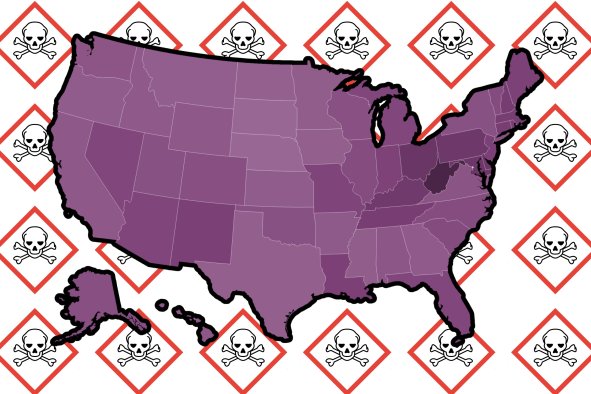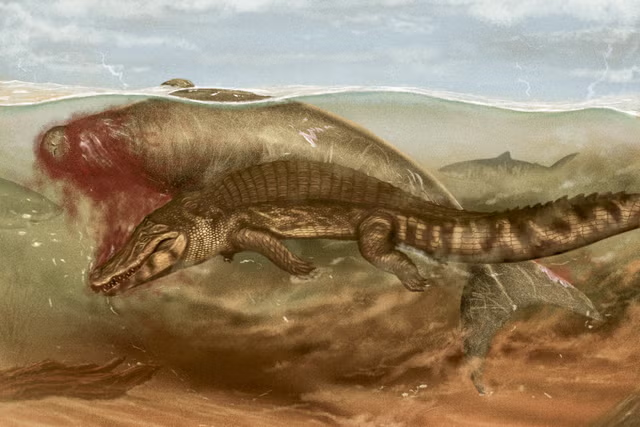A new evaluation of the state of the world's oceans has revealed that the number of fish species at risk of extinction could be five times higher than previously expected.
According to the new predictions, 12.7 percent of fish species face extinction, a significant increase from the 2.5 percent estimated by the International Union for the Conservation of Nature (IUCN).
This so-called "silent extinction" affects 1,337 species, many of which are critical to ecosystems.
"It's too high, right? It shouldn't be like that, but it can be expected," lead author Nicolas Loiseau of the Marine Biodiversity, Exploitation and Conservation Unit told Newsweek.
"We have information for fish populations targeted by fisheries, et cetera, but all other species, especially rare ones, are hard to survey. So I'm not really surprised that within such areas we can find more threatened species."
The study, published in the journal PLOS Biology, employed advanced machine learning and artificial neural networks to assess the extinction risk of nearly 5,000 marine species that had not been previously evaluated due to insufficient data.
These species are classified by the IUCN as data-deficient, meaning they had not been given official conservation statuses, leaving them without necessary protections.
The IUCN Red List currently tracks over 150,000 species globally, guiding conservation efforts for those most at risk. However, the large proportion of data-deficient marine fish—38 percent, or 4,992 species—has created gaps in these efforts.
To address this, the team used two AI models—one neural network and one machine learning algorithm—trained on data from 13,195 species, including their occurrence, biological traits, taxonomy and human uses.
If both models agreed that a species could be at risk, then it was counted among the data. "In this way we built more robust predictions of the threat," Loiseau said.
The results were striking: the number of threatened species leapt up from 334 to 1,671—a fivefold increase.
Species predicted to be at risk of extinction were typically characterized by a small geographic range, shallow habitats, large body size and low growth rate. Regions like the South China Sea, the Philippine and Celebes Seas and the west coasts of Australia and North America, were identified as hotspots for these threatened species.
"But at the same time we also found some small fish at risk. It's funny because we have both large fish and small fish," Loiseau said.
On the back of their findings, the team recommended prioritizing research and conservation efforts in the Pacific islands and the Southern Hemisphere's polar and subpolar regions to protect emerging at-risk species.
While Loiseau acknowledged that AI cannot replace direct evaluations of at-risk species, he thinks it has value in providing rapid, extensive and cost-effective assessments.
He added, "The idea is not to try and create a new way to assess species risk, but our idea is to have a new IUCN status that is complementary to the current status.
"It works alongside the current system, but would provide more data for scientists and governments to better understand and respond to the biodiversity crisis."
The new status, the team suggests, could be called the "predicted IUCN status."
In response to the recommendations, head of the IUCN Red List Unit, Craig Hilton-Taylor, told Newsweek: "There are a number of papers being published where artificial intelligence and machine learning approaches are used to undertake species assessments.
"The IUCN Red List Scientific Committee has a working group looking into the use of these new technologies and how these may be utilized to innovate the Red List assessment and reassessment process—particularly by speeding it up, reducing costs and standardizing approaches.
"As a result, we generally welcome papers like these as they help us decide on which technologies and approaches to investigate further."
For Loiseau, the take-away message is twofold. "The extinction risk seems higher than we thought, so we need to increase the protections of the marine fish by creating large marine protected areas.
"But we can have a positive message too. The ability to process large amounts of data could help us to accurately predict the future of species and to highlight which need urgent evaluations. AI can be a complementary tool for the IUCN."
Do you have a tip on a science story that Newsweek should be covering? Do you have a question about fish biodiversity? Let us know via science@newsweek.com.
References
LoiseauI, N., Mouillot, D., Velez, L., Seguin, R., Casajus, N., Coux, C., Albouy, C., Claverie, T., Duhamet, A., Fleure, V., Langlois, J., Villéger, S., & Mouquet, N. (2024). Inferring the extinction risk of marine fish to inform global conservation priorities. PLOS Biology https://doi.org/10.1371/journal.pbio.3002773
Disclaimer: The copyright of this article belongs to the original author. Reposting this article is solely for the purpose of information dissemination and does not constitute any investment advice. If there is any infringement, please contact us immediately. We will make corrections or deletions as necessary. Thank you.



